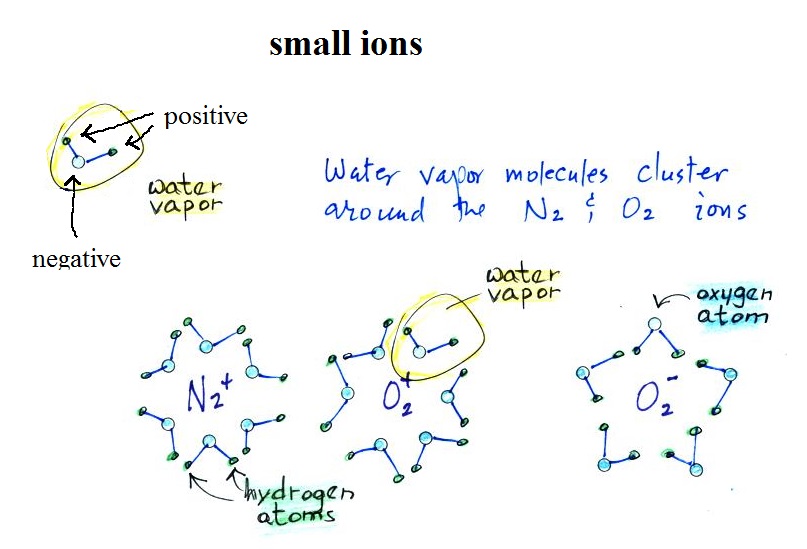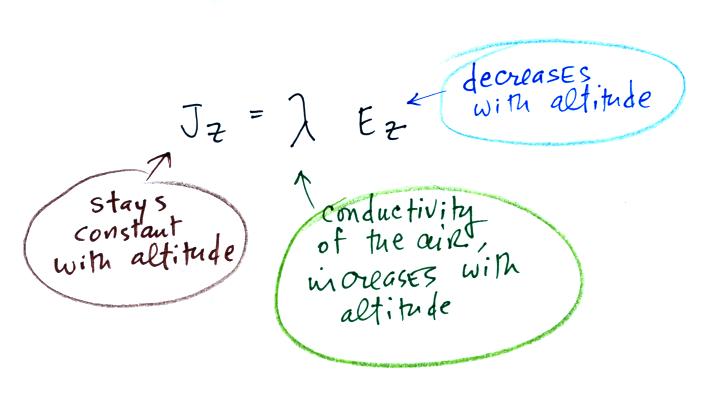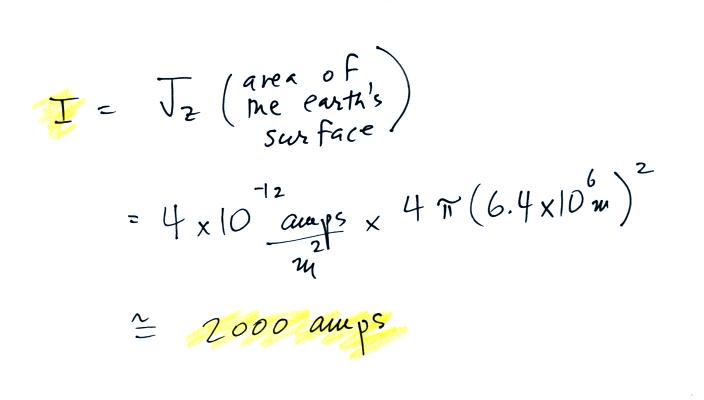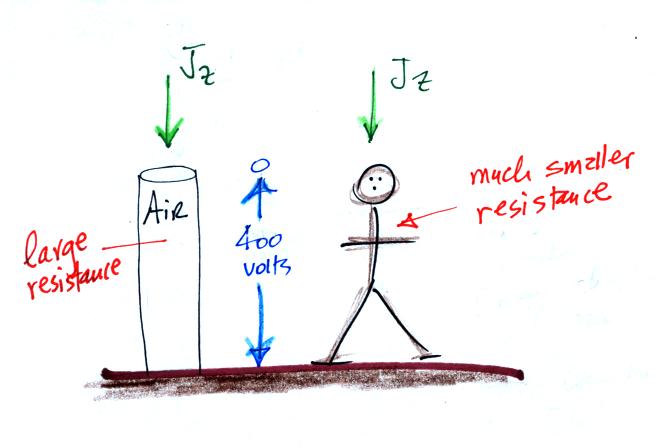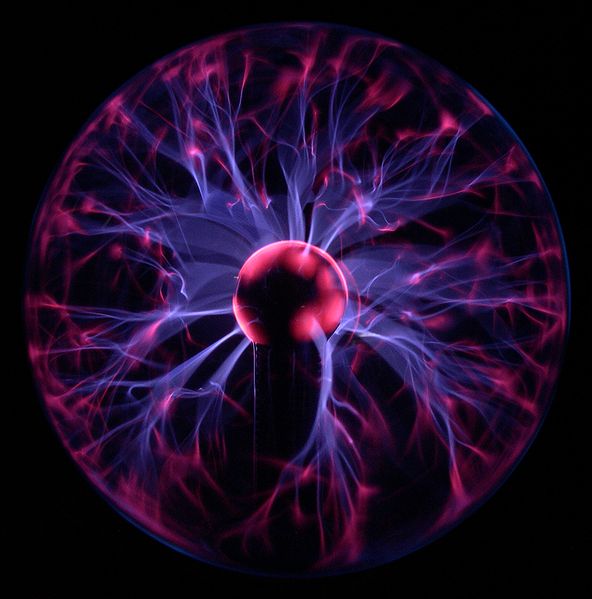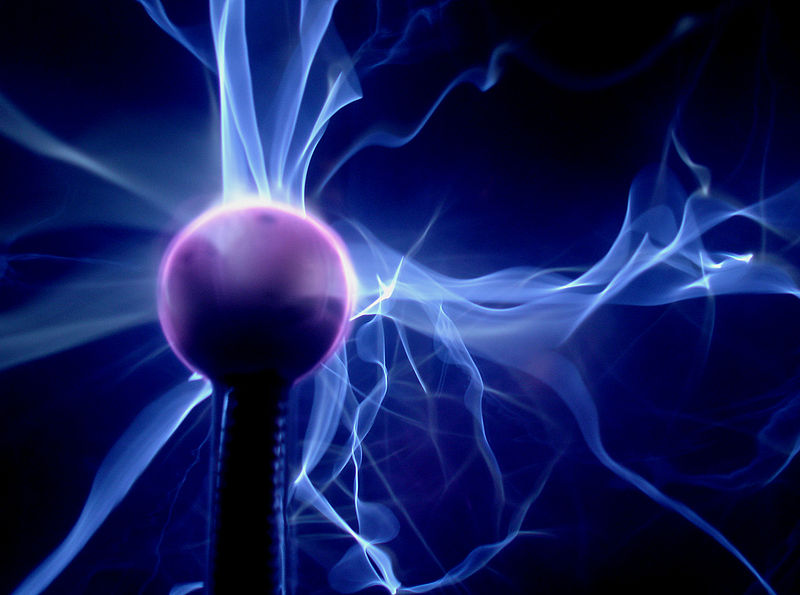We'll find that Ez
decreases, conductivity increases, and current density remains
about constant with increasing altitude (under steady state
conditions).
Point 5 We can assume reasonable values
for the strength of the "fair weather" electric field and the
conductivity of the air to estimate Jz.
We can multiply this current density by the area of the
earth's surface to determine to total current flowing between
the ionosphere and the earth's surface.
Point 7 The
potential of the ionosphere ranges from 150 kV to 600 kV
relative to the earth's surface (see Table 15.1 in The
Earth's Electrical Environment ) We'll use a value
of 300,000 volts.
We can divide the surface-ionosphere potential difference by
the current flowing between the ionosphere and the surface to
determine an effective resistance of the atmosphere.
Point 6
Let's step backward briefly. An electric field of 200
V/m would mean there would be a 400 volt difference between
the ground and a point 2 meters above the ground. I.e.
there's about a 400 volt difference between our head and our
toes when we step outside. Why don't we feel this?
Air has a very low conductivity (high resistance), so a very
weak current flowing through air can produce a large
potential difference. I'm really not sure what the
resistance of a human body is, perhaps 1000 ohms up to as
much as 100,000 ohms depending on how hydrated the body
is. By comparison the resistance of a 2 m tall column
of air with 1 m cross sectional area would be
|

|
Current I flowing through a
resistor R produces a voltage V
|
Analogous situation in the
atmosphere. We can use reasonable values of
current density and voltage difference to estimate
the resistance of a 2 m tall column of air.
|
Compared to 1 x 1014 Ω resistance
of the air column the person is effectively a short circuit
and there really is very little or no head-to-toe potential
difference.
Point 8 There is a simple relation
between the surface charge density, σ (Coulombs per
unit area), and electric field, Ez, at the surface of the
earth, which we assume to be a conductor (we'll derive this
expression soon in this class, it's a simple application of
Gauss' Law). F below stands for Farads, units of
capacitance.
We'll multiply by the area of the surface of the earth to
determine the total charge on the earth's surface
The earth's surface is charged, but a weak current flows
through the atmosphere to the earth trying to neutralize
the charge on the earth. The following calculation shows
that it wouldn't take very long for the current flowing
between the ionosphere and the ground, I, to neutralize
the charge on the earth's surface, Q.
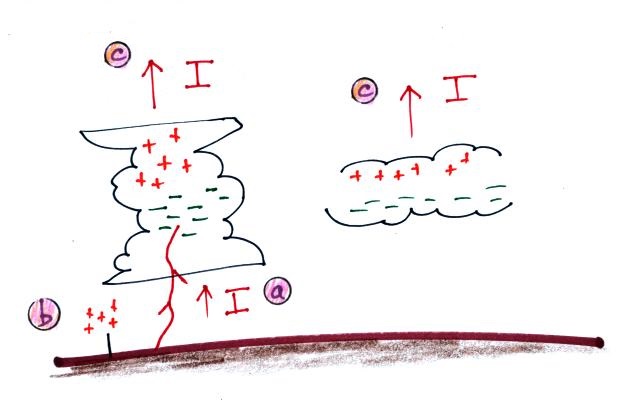
Point 9 The
original answer was thunderstorms. Most
cloud-to-ground lightning carries negative charge to the
ground which is an upward pointing current. Corona
discharge from objects on the ground (point b) also "sprays"
positive charge into the air. Current also flows
upward from the positively charged top of the thunderstorm
(point c above and the so called "Wilson current").
If there are about 2000 thunderstorms active at any time
around the globe and each storm sends about 1 A of current
upward toward the ionosphere we can account for the 2000 A
downward discharging current that we estimated
earlier.
At some point it became clear that thunderstorms alone
weren't enough. The thinking then became that
electrified shower clouds (ESCs) are needed together with
thunderstorms to produce sufficient charging current.
ESCs are electrified clouds that aren't producing lightning
(but they do still contribute to the charging
current). We'll examine this in more detail in our
next class.
We try to include as many basic demonstrations
and examples of working instrumentation used in thunderstorm
and lightning research in this course as we can. They
breakup the normal class routine and can be educational.
Along those lines, the flow of electricity between the
ionosphere and the surface of the earth in some respects
(probably very few respects) resembles the visible
discharges in a plasma globe. Some photos are shown
below (source).
You'll find a clear and basic explanation of how
plasma globes work here
and this
video shows and explains some of the interesting
demonstrations performed using a plasma ball.
References and additional/optional reading
R.P.
Feynman, R.B. Leighton, M. Sands, "Electricity in the
Atmosphere," chap. 9 in the Feynman Lectures on Physics,
Vol. II, Addison-Wesley Publ. Co., 1964.
E.A.
Bering III, A.A. Few, J.R. Benbrook, "The Global Electric
Circuit", Physics Today, 51, 24-30, 1998.
R.G.
Roble and I. Tzur, "The Global Atmospheric-Electrical
Circuit," chap 15. in The Earth's Electrical Environment,
National Academy Press, Washington, 1986.
E.R.
Williams, "The global electrical circuit: A review,"
Atmospheric Research, 91, 140-152, 2009.



